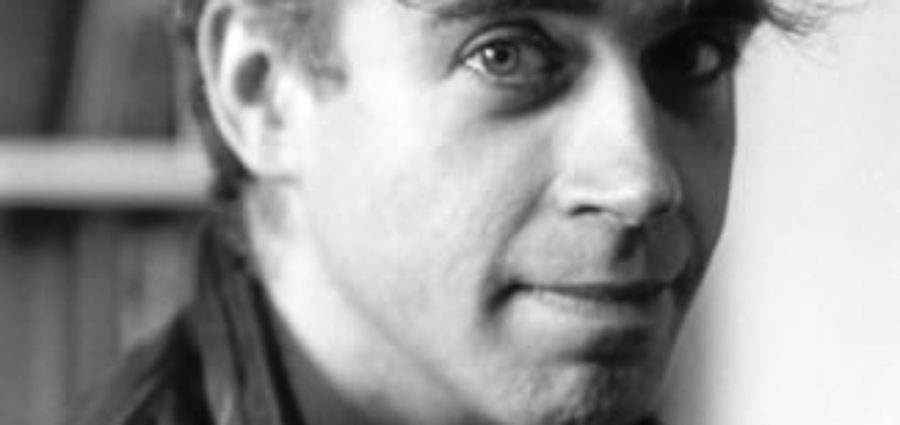Michael Donaghy, a poet of Irish parentage, had such a complex background it would be facile to claim him as irish in a simple sense – but then, there is no simple sense of being Irish.
Irish Culture is nothing if not persistent. It can sometimes seem so elastic, so open to infinite variation and appropriation, as to be virtually meaningless. Yet this elasticity also makes it stretch, not just through space (the many Irelands of the diaspora) but also through time. While cultural nationalists fear that its lack of definition makes the vague idea of Irishness easy prey to the obliterating homogeneity of globalisation, it is often this very quality of adaptability that makes it linger.
One of the most extraordinary examples of this phenomenon is the poet Michael Donaghy, who died in 2004 at the age of 50. Since that sadly early demise, he has come to be seen, in the words of the blurb on the Picador editions of his collected poems and essays, as “one of the UK’s best-known and best-loved poets”. This is not at all an inaccurate description. Donaghy lived in London for the last 20 years of his life, and it would be right and proper to include him in any anthology of contemporary British poetry. But it would be equally proper, perhaps even imperative, to include him in any anthology of contemporary American poetry. And at least half a dozen of his poems belong in any representative selection of the Irish poetry of the past 30 years.
Donaghy was born in the Bronx in 1954 to parents who had emigrated four years earlier from Tralee and Belfast. When he was very young, his parents brought him back to live in each of their hometowns in turn. He then moved back after a few years to a Spanish-speaking district of the south Bronx, where he grew up. After he moved to London in 1985, he became an “English” poet, but he continued to play Irish traditional music.
With such a complex background, it would be facile to claim Donaghy as Irish in a simple sense. But then, there is no simple sense of being Irish.
Donaghy is as Irish a figure as Samuel Beckett or Eugene O’Neill or Elizabeth Bowen – which is to say a great deal in some respects and not at all in others. What’s fascinating for Irish readers, though (apart from the sheer wit and beauty, the intellectual and formal dexterity of his work in general), is the way the culture of his parents seeps through the lines.
It is not an easy presence. In one of his few direct reflections on his relationship with Irishness, in Fraction , Donaghy recalls a moment when he turned on his mother, who was recounting a family story of the Irish civil war, and announces: “I’m American.” His mother goes to pieces: “I was thirteen. I didn’t know who I was. She knew.” And Donaghy realises that he is caught forever between two lives, “Between the flash and the report”.
As Donaghy remarked to Conor O’Callaghan, in an interview republished in the essay collection The Shape of the Dance , “I never pursued an Irish identity. I just backed into it. I’m not interested in literary nationalism of any kind.” Apart from that ambivalent relationship with his parents’ Irishness, Donaghy’s links to the old sod were essentially aesthetic – through the playing of Irish music and through a love for the “singing line” of Irish poets, most importantly Derek Mahon and Paul Muldoon.
There is a sense in Donaghy that being Irish is a way of not being an experimental modernist, whose institutionalised forms in American poetry he dismissed as a “tired set of gestures”. The Irish seam in his work leads him, paradoxically, back to the formality of the American poets of the 1950s and 1960s – Richard Wilbur, Anthony Hecht, James Merrill.
This, oddly enough, has a lot to do with his playing of Irish music. The music gives Donaghy a way of evoking culture as a collective memory, no more solid and trustworthy than personal memories tend to be, but just as haunting. He has, in The Hunter’s Purse, a superb image of the traditional Sligo fiddler and New York cop Jack O’Ryan falling asleep drunk in Central Park and freezing to death. “They shipped his corpse home, like his records,” writes Donaghy, capturing at once both the death and the survival of a culture. He remembers the great box player Joe Cooley in Chicago, and evokes the moment with a luminous brilliance before confessing: “I saw this happen. Or heard it told so well/ I’ve staged the whole drunk memory:/ What does it matter now? It’s ancient history./ Who can name them? Where lie their bones and armour?”
Yet, those untrustworthy memories shape the poet’s forms. In his essay Wallflowers, which begins with him playing at a céilí in Chicago, he writes of orally transmitted traditions that “a player in such a tradition is expected to improvise, to ‘make it new’, and the possibilities for expression within the prescribed forms are infinite. But it’s considered absurd to violate the conventions of the form, the ‘shape’ of the dance tune or story, because you leave the community of your audience behind, and you bring the dancers to a standstill.” Donaghy defined “traditional form” as “those verbal and rhythmical schemes shared by the living community which link it to the dead and to generations to come”. It is the music that gave Donaghy the courage to wrench poetry back from experimental modernism towards a highly formal “traditional” approach.
Yet, Donaghy also used the Irish strain in his make-up, not as an identity but as a way of escaping identities. As he writes in Meridian : “Me, I live smack on the borderline,/ Where the road ends with towers and searchlights.”
Being a little Irish but also a lot of other things allows Donaghy to play postmodern games with language and identity (he has a particularly beautiful sequence of short poems that, on first publication, he successfully presented as translations from medieval Welsh). Instead of weighing him down, the Irish strain keeps him light on his feet. In one of his finest poems, Machines , Donaghy uses the image of the cyclist, “Who only by moving can balance,/ Only by balancing can move.” It is also a wonderful image of the way to use a cultural heritage – keeping it balanced with the solidity of shared meanings, but keeping it moving nonetheless.
As published by the Irish Times.








